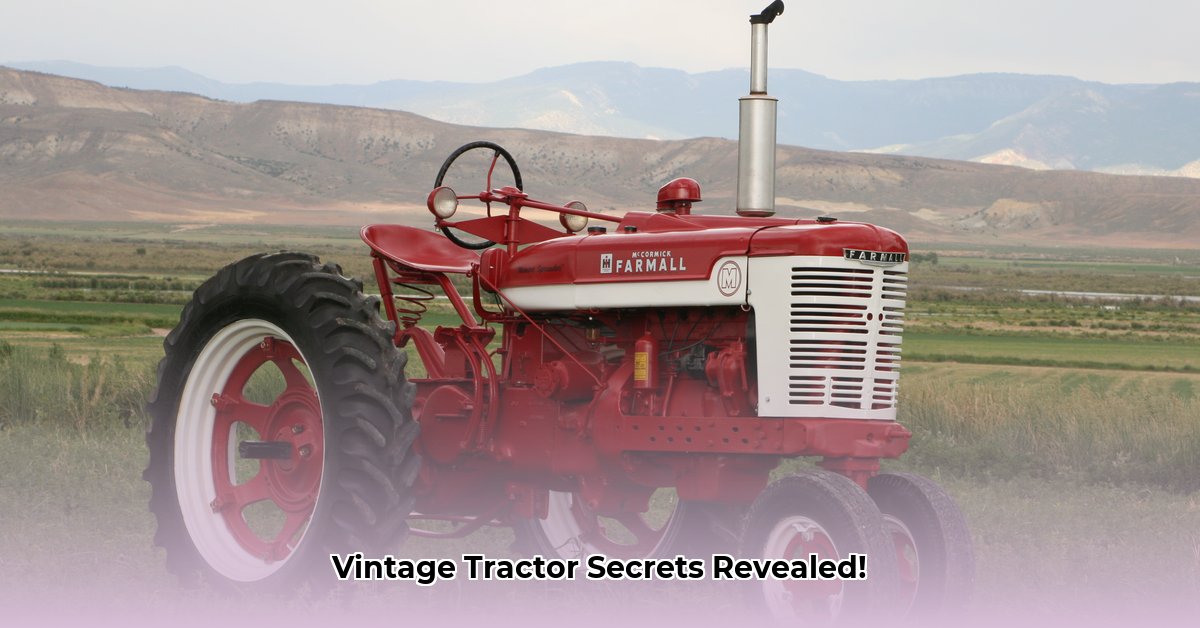
This article explores the rich history and specifications of International Harvester (IH) tractors produced between 1914 and 1984. From their early kerosene-powered designs to the more powerful diesel engines of later years, these machines represent a significant chapter in agricultural history. We'll examine key model series, highlighting notable features and addressing the challenges inherent in verifying historical data. This guide is intended for both seasoned collectors and curious enthusiasts. For comparison, see information on other classic tractors like John Deere tractors.
Old International Tractor Models: A Nostalgic Look Back (1914-1984)
International Harvester tractors weren't merely machines; they were symbols of an era, representing American ingenuity and the backbone of countless farms. This exploration will uncover some distinctive features and the inherent difficulties in reconstructing a complete historical record.
The Pioneer Years: Kerosene and Endurance (1914-1920s)
The early IH tractors were remarkably robust, prioritizing reliability over speed or advanced features. Kerosene fueled these workhorses, reflecting the technological constraints of their time. These early models were simple yet dependable, serving as a foundation for future innovations. Did you know that early IH models were often adapted to various tasks beyond plowing, demonstrating their versatility?
Gasoline and Diesel: A Powerful Progression (1930s-1950s)
The shift towards gasoline and, eventually, diesel engines in the 1930s and beyond marked a considerable advancement. The IH 100 series exemplifies this evolution, offering increased power and efficiency. However, sourcing accurate data for these early models presents challenges. Inconsistencies in historical records make precise specification verification a complex task. How much horsepower did the International Harvester 100 truly generate? Sources vary widely, highlighting the need for careful cross-referencing.
Mid-Century Innovations: Improving Comfort and Power (1950s-1970s)
The International Harvester 400 series, and subsequent models, represent a notable step forward in both performance and operator comfort. Increased horsepower and improved fuel efficiency were hallmarks of these mid-century marvels. Yet, the challenge of data verification persists. Even for relatively recent models, differences in recorded horsepower and other specifications exist, underscoring the difficulties in creating a complete database. What were the defining characteristics that distinguished the International Harvester 400 from its predecessors? Research continues to uncover the full story.
Key Model Specifications (Partial Data)
The following table presents a selection of notable models, emphasizing the inherent data discrepancies. Horsepower figures often vary across sources, reflecting the challenge in verifying historical information.
| Model Name | Approximate Production Years | Engine Type | Fuel Type(s) | Drive Type | Notable Features |
|---|---|---|---|---|---|
| International 140 | 1960s-1970s | Gasoline/Diesel | Gasoline, Diesel | 2WD | Popular and relatively common amongst collectors. |
| International 240 | 1960s-1970s | Gasoline/Diesel | Gasoline, Diesel | 2WD | Increased power and capability over the 140. |
| International 340 | 1970s | Gasoline/Diesel | Gasoline, Diesel | 2WD | Built upon the success of its predecessors. |
| International 444 | 1960s-1970s | Diesel | Diesel | 2WD | Advanced diesel technology, popular with restoration enthusiasts. |
| International 460 | 1970s | Diesel | Diesel | 2WD | Frequently seen at collector events and shows. |
| International 560 | 1970s | Diesel | Diesel | 2WD | A powerful tractor for its time, highly sought after. |
(Note: This table includes only a fraction of the IH tractor models. Years and horsepower are approximations due to inconsistent sourcing.)
Uncovering the Truth: Verifying International Harvester Tractor Specifications
Accurately documenting the specifications of these historic tractors presents unique challenges. The absence of complete historical records is a significant hurdle, compounded by variations within model production runs.
Key Considerations:
- Source Reliability: Cross-referencing data from multiple sources is crucial in verifying specifications. Owner's manuals, sales literature, and enthusiast forums provide valuable - albeit sometimes conflicting - information.
- Model Variations: IH often made subtle changes during production, leading to differences within the same model designation.
- Data Discrepancies: Be prepared for inconsistencies in published data, acknowledging these discrepancies in your research.
The continuous effort to document these tractors’ history showcases their enduring appeal. By contributing verified data, enthusiasts can create a more comprehensive resource for future researchers and collectors alike. This collective effort is key to preserving the legacy of these iconic machines, allowing future generations to appreciate and maybe even restore them.